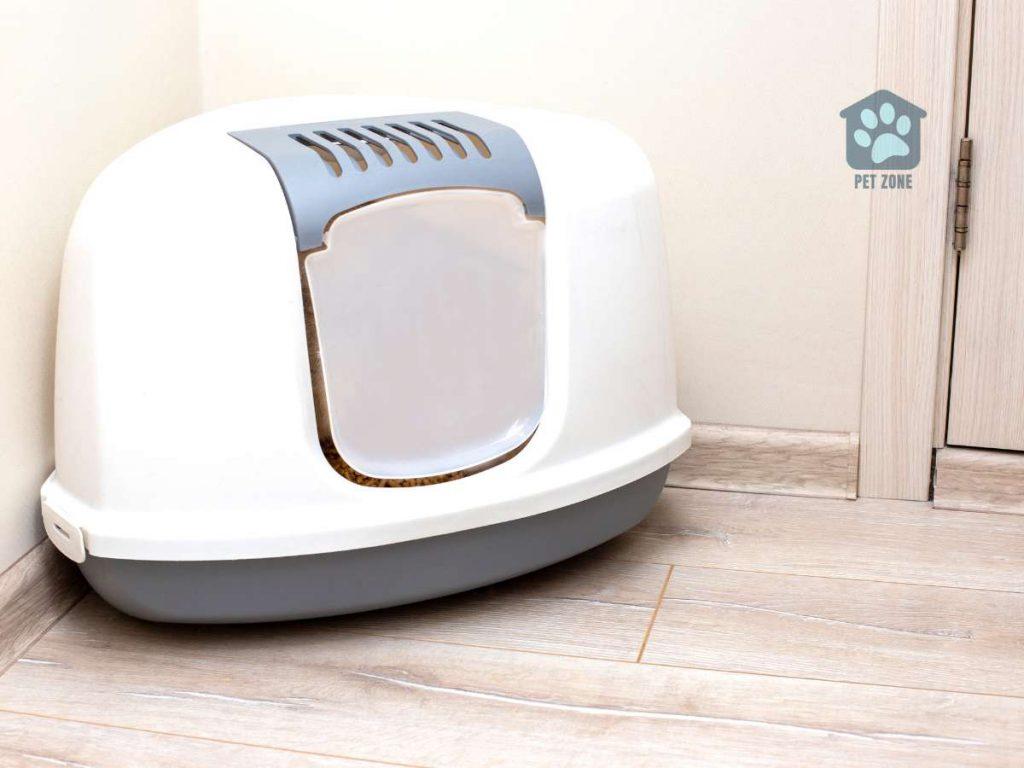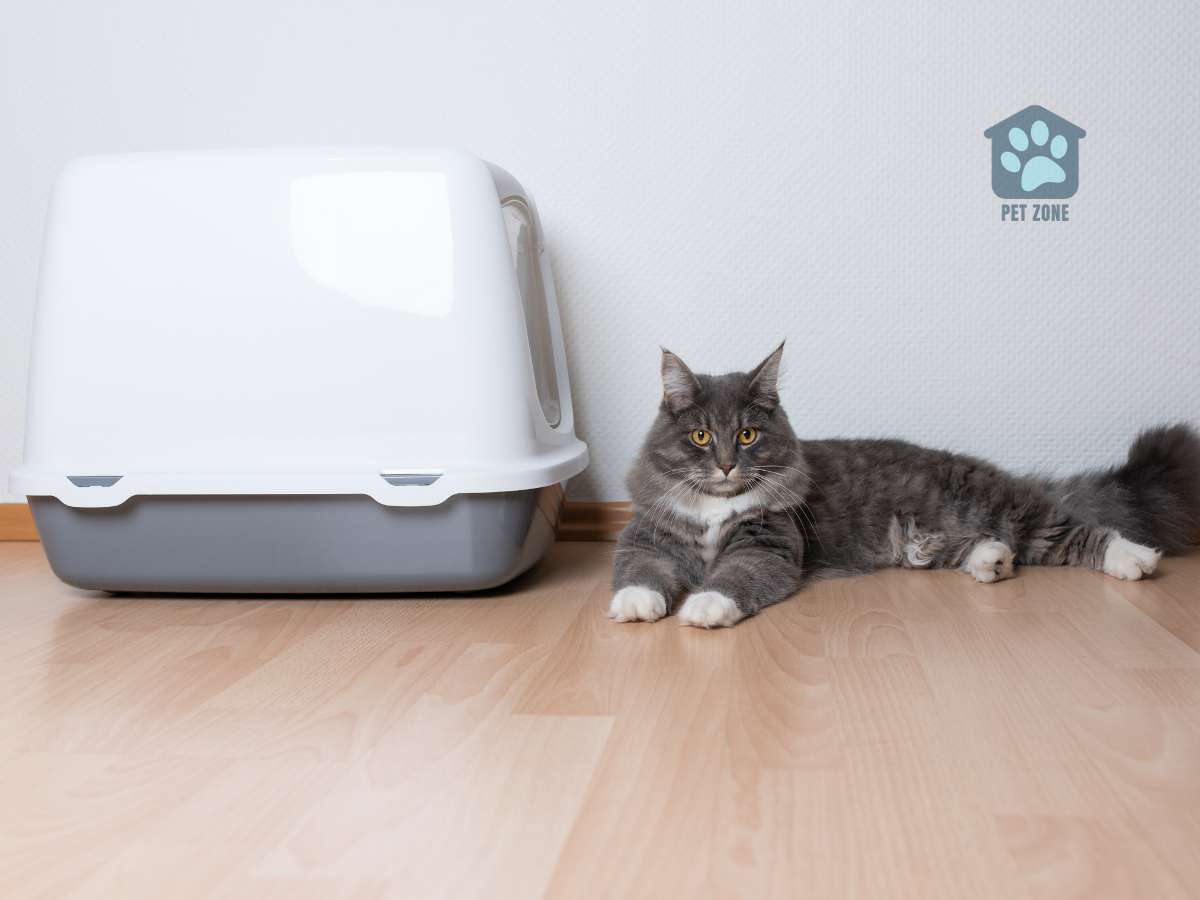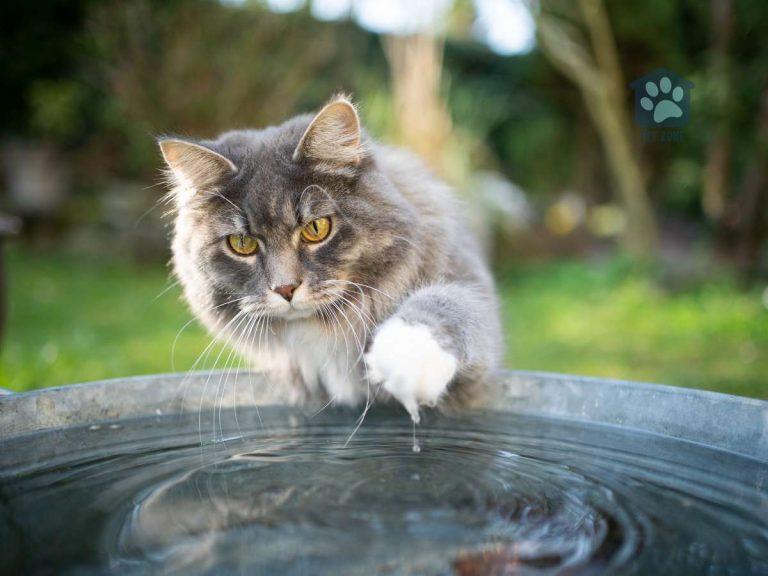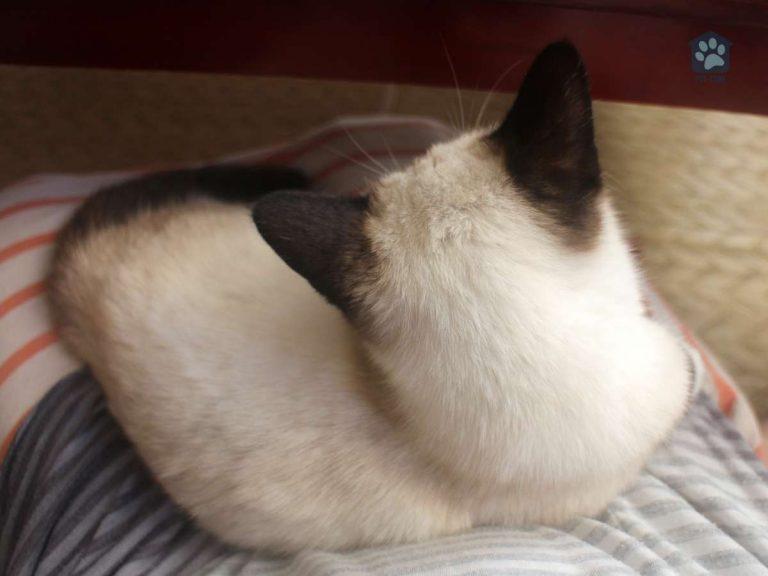Estimated reading time: 10 minutes
One key aspect of creating a comfortable and inviting environment for your cat is the litter box. If you’re considering transitioning to a covered litter box, you’re taking an important step toward providing privacy, odor control, and a more contained litter area.
Introducing this change may require some guidance and patience. In this comprehensive guide, we will explore the benefits of using a covered litter box, discuss the steps to successfully introduce your cat to this new setup, troubleshoot common issues that may arise during the transition, and offer alternative solutions if your cat continues to resist.
Why Should You Use a Covered Litter Box?
Benefits of Using a Covered Litter Box
When it comes to providing the best litter box experience for your cat, a covered litter box can offer numerous advantages. Let’s explore the key benefits that make a covered litter box a worthwhile consideration for both you and your feline friend.
- Odor Control: A covered litter box helps contain unpleasant odors that may otherwise permeate your home. The enclosed design traps odors inside, ensuring a fresher environment for both you and your cat.
- Privacy and Security: Cats are naturally private creatures, and a covered litter box provides them with the seclusion and security they often seek during their essential moments. The enclosed space offers a cozy and private spot for them to take care of their business.
- Reduced Mess: Some cats tend to dig vigorously, causing litter to be flung outside the box. With a covered litter box, the sides and top help contain the litter, preventing unnecessary mess and making cleanup more manageable.
- Visual Appeal: Covered litter boxes come in various designs and styles that can complement your home décor. They can blend seamlessly into your living space and provide a more aesthetically pleasing litter box solution.
Is Your Cat a Candidate for a Covered Litter Box?
While covered litter boxes offer many benefits, you need to consider whether your cat is a suitable candidate for this type of litter box. Here are a few factors to take into account:
- Size and Accessibility: Ensure that the covered litter box you choose is spacious enough for your cat to move comfortably inside. It should also have an entryway that allows easy access for cats of all sizes, including kittens and elderly cats.
- Acceptance and Adaptability: Some cats may take time to adjust to the enclosed space of a covered litter box. If your cat is particularly skittish or has had negative experiences with confined spaces in the past, it’s crucial to introduce the covered litter box gradually to gauge their comfort level.
- Litter Preferences: Consider your cat’s preferences regarding litter texture and scent. While most cats adapt well to covered litter boxes, some may have specific litter preferences that need to be taken into account.
How to Choose the Right Covered Litter Box for Your Cat?
Choosing the right covered litter box is essential for your cat’s comfort and acceptance. Here are some factors to consider when making your selection:
- Size and Dimensions: Opt for a covered litter box that provides ample space for your cat to move around comfortably. Ensure that the dimensions are suitable for your cat’s size and allow them to assume their preferred posture while using the litter box.
- Entry and Exit: Look for a covered litter box with a wide and easily accessible entry point. This is especially important if you have an older cat or a kitten that may have difficulty navigating narrow openings.
- Ventilation: Good airflow within the covered litter box is crucial to minimize odors and maintain a fresh environment. Choose a model with ventilation features or one that has a filter system to ensure proper air circulation.
- Material and Durability: Select a covered litter box made of sturdy, easy-to-clean materials that can withstand regular use. Avoid materials that may retain odors or are challenging to sanitize effectively.
What Are the Different Types of Covered Litter Boxes?
Covered litter boxes come in various styles, each with its own unique features. Here are some common types of covered litter boxes to consider:
- Hooded Litter Boxes: These covered litter boxes feature a removable hood that provides privacy while allowing easy access for cleaning. They are versatile and suitable for most cats.
- Top-Entry Litter Boxes: With a top-entry design, these litter boxes offer maximum privacy and help minimize litter tracking. Cats enter through an opening on the top, and the lid can be removed for cleaning.
- Self-Cleaning Litter Boxes: Self-cleaning covered litter boxes use automation to remove waste, providing a hassle-free litter box experience. These advanced systems reduce the frequency of manual scooping.
- Furniture-Style Litter Boxes: These litter boxes are designed to resemble regular furniture, allowing them to blend seamlessly with your home decor. They provide a discreet and aesthetically pleasing solution.

How to Introduce the New Box to Your Cat?
What Are the Steps You Need to Follow?
Introducing your cat to a covered litter box requires patience and a gradual approach. Follow these steps to ensure a smooth transition:
- Familiarization: Start by placing the new covered litter box next to the current open litter box. Allow your cat to explore the new box at their own pace. You can initially leave the lid off to make it less intimidating.
- Gradual Enclosure: Over time, gradually introduce the cover by placing it loosely on top of the litter box. This allows your cat to adjust to the new surroundings without feeling trapped. Monitor their comfort level and adjust the pace accordingly.
- Complete Enclosure: Once your cat seems comfortable with the partial enclosure, fully attach the cover to the litter box. Ensure that there is adequate ventilation and the interior is well-lit. Some covered litter boxes have doors that can be propped open initially to make it more inviting.
How to Get Your Cat to Use a Hooded Litter Box?
Encouraging your cat to use the new litter box requires positive reinforcement and patience. Here are some tips to help them make the transition:
- Gradual Transition: Start by gradually reducing the availability of the old open litter box while increasing accessibility to the new covered litter box. This encourages your cat to adapt to the new environment.
- Positive Association: Place some of the old litter or waste from the previous box into the new covered litter box. The familiar scent will help your cat recognize it as an acceptable place for elimination.
- Rewards and Praise: Whenever your cat successfully uses the covered litter box, reward them with treats or verbal praise. Positive reinforcement helps create a positive association with the new litter box.
What Kind of Litter Should You Use?
The choice of cat litter plays an important role in your cat’s acceptance of the covered litter box. To ensure a smooth transition, follow these guidelines:
- Familiarity: Initially, continue using the same type of litter your cat is accustomed to. Once they are comfortable using the covered litter box, you can gradually introduce a new type of litter in the box if desired.
- Texture and Odor: Choose a litter with a texture and odor that your cat finds appealing. Some cats prefer fine-grained litter, while others prefer coarser textures. Consider your cat’s preferences to help encourage their use of the covered litter box.
Should You Place the New Litter Box in the Same Location as the Old One?
It is generally recommended to place the new enclosed litter box in the same location as the old one. Cats are creatures of habit, and maintaining consistency in the litter box location can ease their transition and reduce confusion.
However, if the current location is not ideal, gradually move the covered litter box to a preferred location while ensuring it remains easily accessible.
How to Train Your Cat to Use the Covered Litter Box?
Training your cat to use a new type of litter box involves patience and positive reinforcement. Here are some training tips:
- Encouragement: Gently guide your cat into the covered litter box and praise them when they use it correctly. You can also use a cue word or phrase to associate with the litter box, reinforcing the behavior.
- Regular Monitoring: Keep a close eye on your cat’s litter box habits during the transition phase. If you notice any reluctance or accidents, provide gentle guidance back to the covered litter box and reward them for using it.
- Cleaning and Maintenance: Regularly clean the covered litter box to maintain a hygienic environment. Cats prefer clean litter boxes, so scooping waste daily and replacing litter as needed is crucial for their comfort and acceptance.
By following these steps and providing a positive and patient approach, you can help your cat adapt to the covered litter box and ensure a successful transition.
Troubleshooting Common Problems During the Transition
My Cat Refuses to Use the Covered Litter Box, What Should I Do?
If your cat is hesitant to use the covered litter box, try the following solutions:
- Gradual Acclimation: Go back a step in the transition process by temporarily removing the cover or using a partially covered litter box. Allow your cat to get accustomed to this setup before reintroducing the cover gradually.
- Patience and Persistence: Some cats may need more time to adjust to the change. Be patient, continue providing positive reinforcement, and monitor their progress. If necessary, consult with a veterinarian or a professional animal behaviorist for additional guidance.
My Cat Kicks Litter Everywhere, What Should I Do?
If your cat tends to kick litter out of the covered litter box, consider these suggestions:
- Litter Mat: Place a litter mat outside the covered litter box to catch any stray litter. The mat’s textured surface helps remove excess litter from your cat’s paws as they exit the box.
- High-Sided Box: Opt for a covered litter box with higher sides or place a litter box with high walls inside the covered box. This can help contain the litter better, minimizing scattering outside the box.
- Litter Containment Solutions: Some litter boxes come with built-in features such as entryway steps or litter containment systems to minimize litter tracking. Exploring these options may help address the issue.
My Cat is Territorial and Won’t Share the Litter Box, What Should I Do?
If your cat is territorial and refuses to share the covered litter box, consider these strategies:
- Multiple Litter Boxes: Provide multiple litter boxes throughout your home, ensuring each cat has their own designated box. This reduces competition and helps maintain a peaceful litter box environment.
- Separation and Privacy: Place the covered litter boxes in separate areas to provide each cat with privacy and prevent territorial disputes. This allows each cat to have their own dedicated litter box space.
How Often Should You Clean the Covered Litter Box?
Regular cleaning of the covered litter box is essential for your cat’s hygiene and comfort. Aim to clean the litter box at least once or twice daily, removing any waste promptly.
Additionally, replace the litter as needed, following the instructions provided by the litter manufacturer.
What Are Some Alternatives If Your Cat Still Refuses to Use the Covered Litter Box?
If your cat continues to resist using the covered litter box, you can explore alternative options:
- Uncovered Litter Box: Consider reintroducing an uncovered litter box alongside the covered one. Some cats have strong preferences for open spaces, and providing an alternative may encourage proper litter box usage.
- Different Design or Location: Try a different style or design of a covered litter box to see if your cat responds better to a specific configuration. Additionally, consider changing the location of the litter box to a quieter or more accessible area to entice your cat.
Conclusion
By considering the benefits of a covered litter box, following a gradual introduction process, and troubleshooting any challenges along the way, you can create a positive and comfortable environment that encourages proper litter box usage.
Remember to be patient, provide positive reinforcement, and adapt the approach to suit your cat’s individual needs. Whether you successfully make the transition or need to explore alternative solutions, the ultimate goal is to ensure your cat’s comfort, hygiene, and well-being.
By being a caring and attentive cat owner, you can create a litter box experience that keeps your beloved companion content and your home clean.
Please Comment and Share
We hope you found this article helpful! If you have any thoughts or experiences you’d like to share, please feel free to leave a comment below. We love hearing from our readers.
And if you think this article could help other cat parents, don’t hesitate to share it on your social media platforms. Your shares help us reach more interested pet people. Thanks for your support!








